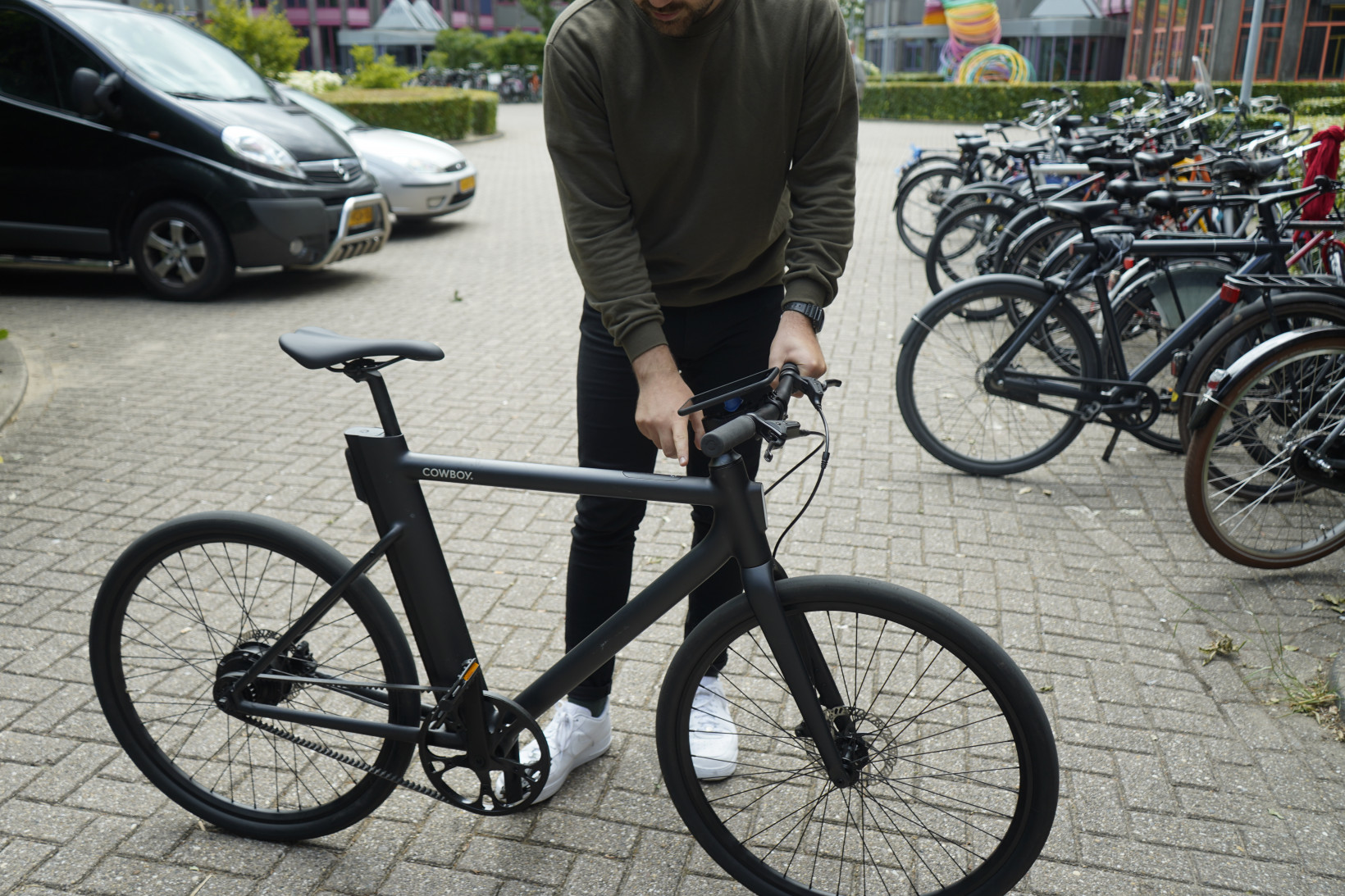
Welcome to Riding Nerdy, TNW’s fortnightly dive into bicycle-based tech, where we go into too much detail and geek out on all things related to pedal-powered gadgets.
The new year is here, while we might only just be done with saying goodbye to 2019 and the last decade, there’s an exciting year ahead. Join Riding Nerdy this week, where we look forward with our top 5 predictions for bike tech in the coming year.
1. Ebikes…. ebikes everywhere!
The past year has been great in terms of uptake, but ebikes are still yet to take over the European market. In Germany, over the first half of 2019 nearly as many e-bikes were sold as in the whole of 2018. Industry experts expect the European ebike market to triple ins size over the next five years.
As the market grows, we will also start to see a broader range of ebikes appear on the streets. Ebikes are no longer utilitarian machines to give a helping hand on hills or around town, there really is an e-bike to suit everyone’s needs and desires.
There are practical e-bikes that can carry luggage, children, pets, or literally anything if you’re Dutch. There are also e-bikes, like the VanMoof or Cowboy, that stylishly integrate hardware to appeal to the more aesthetically conscious rider. There are even lightweight race machines with inconspicuous electrical assistance for the racer that might need the safety of a get out of jail free card. Consumer choice in the industry is getting better and better every month.

E-bike manufacturers are also starting to develop a host of other integrated smart tech add-ons, like GPS tracking and navigation. These additions are making electrically assisted bicycles an even more enticing proposition for some.
In terms of product development, there isn’t much left for e-bike manufacturers to do beyond increase battery range and performance, and reduce the weight of their machines. With that in mind, it’s about time prices for electric bikes came down, to make them a strong value proposition for new customers.
With all these factors coming together over the next year, we’re going to start seeing a lot more e-bikes on the roads.
2. More affordable home training tech
Over the past few years, we’ve seen the home training sector explode. Forecasts suggest this trend is going to continue. By 2025, it’s estimated the bike trainer market will be worth $140 million globally. This is nearly double what the market’s value was in 2017.
Indoor bike trainers are not a new invention. Traditionally, they are the tools used by cyclists to warm-up before races or train during the winter when the weather is too bad to go outside. They work by attaching to the rear wheel of a bicycle and generate resistance using magnets or fluids that change viscosity based on the speed of the wheel.
In recent years, we’ve seen a swathe of “direct drive, smart trainers” come to market — many are now in their second generation.

Smart trainers have the capability to alter the resistance automatically, measure power, speed, and distance. Direct drive trainers attach to the bike’s drivetrain directly, and are far quieter than traditional wheel-on trainers.
Smart trainers are also designed to integrate with online gaming-cum-training platforms, like Zwift, where riders from all over the world compete and train together in a virtual world.
Good smart trainers can cost well in excess of $500, but prices have been coming down. Indeed, more affordable options are coming to market, bringing the opportunity of technified training to more people.
As this continues, more riders will avoid putting their bike away entirely during the foul winter months and opt to train indoors with specific high-tech workouts.
3. Zwift eRacing will poke its head into the mainstream
Online gaming-cum-training platform Zwift has been working hard to grow its user base in recent years, and 2020 might be the year that it starts being recognized by more people.
Back in early January, it saw a new record for the number of concurrent users at anyone time with more than 10,000 active “Zwifters” riding simultaneously, Zwift Insider reported.
This year has also seen the platform push to legitimize and take the sport of e-racing to a bigger mainstream public audience. The platform held its first Australian and British National e-racing championships back in March, which saw the nation’s top e-racers battle it out in televised arenas to become national champion.

What’s more, German bicycle manufacturer Canyon has sponsored the first specialist e-racing team, called Canyon ZCC. This is a team that’s sole purpose is to train and race on the virtual platform Zwift.
Just like real world cycling, e-racing had its share of controversy. The platform made headlines when the first male British national champion was stripped of his title after it was revealed that he previously used hacks to unlock in game content.
However, Zwift has big plans. The indoor cycle-gaming platform wants to become a recognized Olympic sport by 2024. If that’s going to happen then we’re going to be seeing much more of Zwift in the mainstream as it attempts to catapult itself away from its niche.
4. Mad tech at Tokyo 2020 Olympics
Earlier this month, the British Cycling track team unveiled its radical new Olympic track bicycle. The bike had its first outing at a recent track world cup in Minsk, Belarus but the Tokyo 2020 Olympic Games are where BC really want to show it off.
The new British bike has a wild and unconventional frame design that’s already turning heads in the cycling industry.

But it’s not just the British team that are pushing the boundaries of bicycle tech. Back in October, the Japanese track cycling team unveiled two new bikes destined for the Tokyo Olympics. One designed for sprint events and the other for longer distances.
The Japanese cycling federation said both of these machines are faster, stiffer, and lighter than the team’s outgoing bikes. Some of the team’s riders are already claiming to have set new personal records in training on the new bikes.
The Australian track cycling team also recently revealed specialist 3D printed components from home-nation brand and additive manufacturing specialists Bastion. The hardware, including handlebars and cranksets, will adorn their track race bikes in Tokyo next year.
But why should you care? Well, many of the features in these pieces of tech and the manufacturing techniques used to make them, will trickle down to consumer tech in the coming years.
If these top-level machines prove their aerodynamic designs in competition, I’d put money on us seeing similar design concepts in the consumer market in the near future.
5. 3D printing will bring new bike specific products to life
The cycling industry, manufacturers in particular, are turning to 3D printing at a seemingly increasing rate. Over the past year, we’ve seen a broader adoption of additive manufacturing techniques for use in cycling related products.
3D printing is being used at the top end of the sport to manufacture unique designs that aren’t possible with conventional manufacturing techniques, and these techniques are beginning to find their way into the consumer market.
Take British brand HEXR, for example, which released its fully custom bicycle helmet that’s made through a process of 3D printing and a unique “headscan.” By using 3D printing, HEXR says it has reduced waste, and designed a product that is more environmentally friendly than traditional foam-based helmets. But it isn’t cheap, one of HEXR’s helmets will set you back around $390.

One of the world’s largest bicycle manufacturers Specialized also caught the attention of the cycling media when it announced a customizable 3D printed version of one of its racing saddles earlier this year. After being tested by numerous professional teams, it’s due to be released in early 2020. There’s been no mention of pricing yet, but I wouldn’t expect a bargain.

But it’s not just Specialized that’s using 3D printing to make the saddles of the future. Italian brand Fizik is using the same technique, Digital Light Synthesis, to design what it calls an “adaptive” bike saddle. In short, it’s using 3D printing to build a saddle that can have varying densities of cushioning depending on what the rider prefers.
Next year will be an interesting year for bike tech, and thanks to developments in e-racing, smart trainers, and 3D printing, it’s a year I’m very excited about.
Get the TNW newsletter
Get the most important tech news in your inbox each week.







